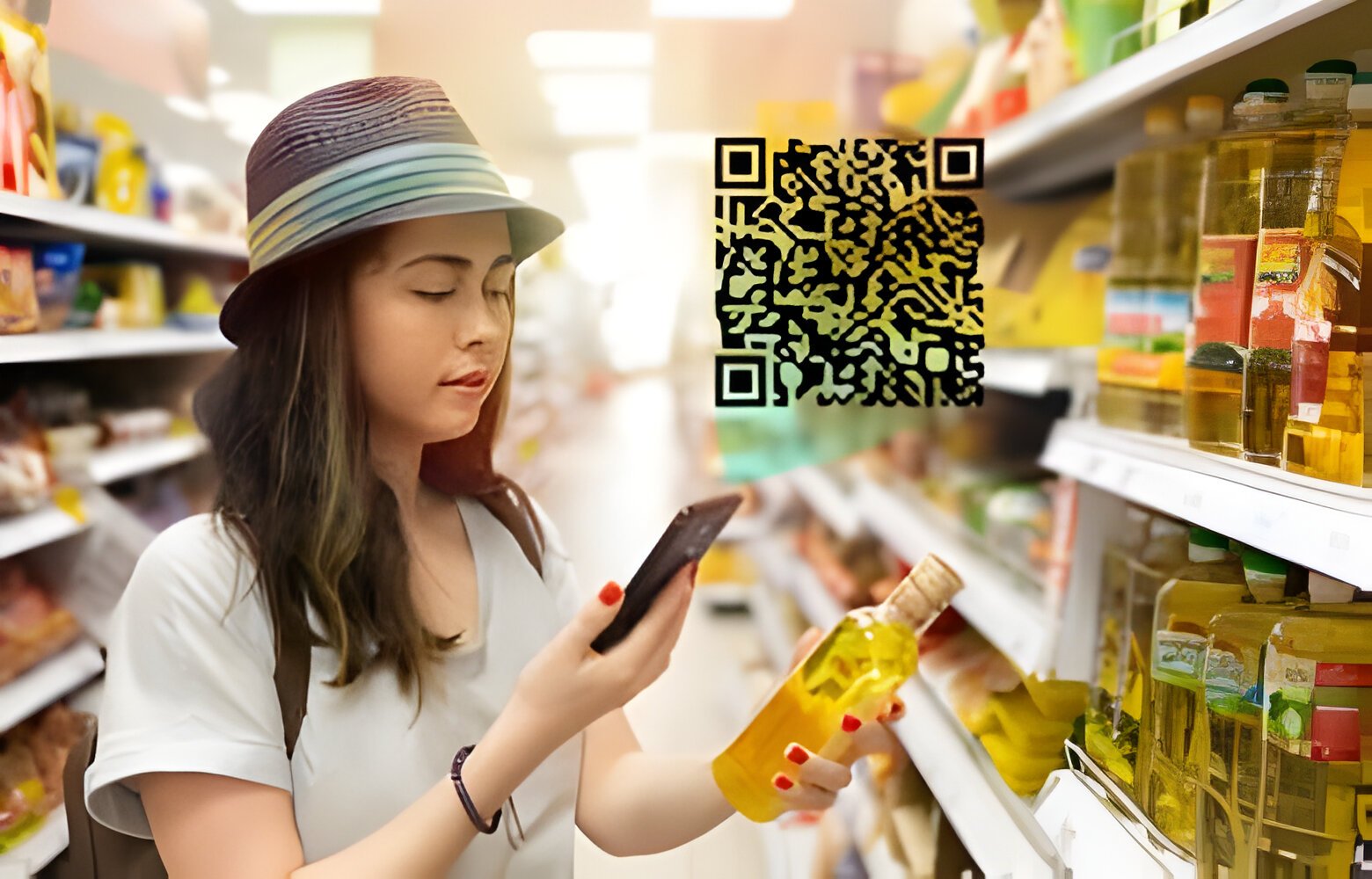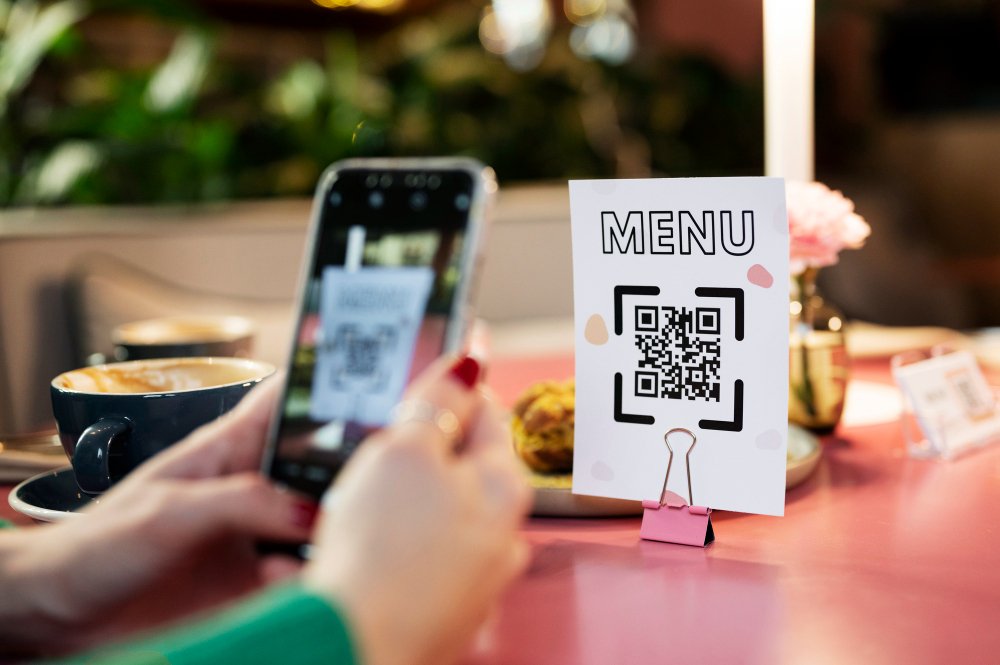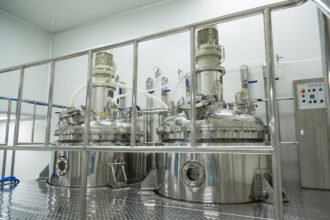How QR Codes Transform Food Traceability for Consumers
- 1 The Significance of Food Traceability
- 2 What Are QR Codes in Food Traceability, and How Do They Work?
- 3 Benefits of QR Codes in Food Traceability
- 3.1 Enhanced Traceability:
- 3.2 Improved Food Safety:
- 3.3 Consumer Empowerment:
- 3.4 Supply Chain Efficiency:
- 3.5 Brand Protection and Marketing:
- 3.6 Case Studies:
- 4 Implementation in the Food Industry
- 5 Conclusion
The integration of digital technology within the food industry has been a game-changer in terms of transparency and traceability. Among these advancements, QR codes have emerged as a powerful tool for bridging the information gap between food producers, consumers, and regulatory bodies. They provide a simple, efficient, and cost-effective method to access a wealth of information about food products with just a quick scan using a smartphone.
Food safety and provenance are prominent concerns in the modern era, where consumers are increasingly conscious about what they eat. As demand for transparency in the food supply chain grows, innovative technologies like Quick Response (QR) Codes are stepping up to offer a solution. This blog post explores the transformative role of QR codes in food traceability, enhancing consumer confidence and compliance with regulatory requirements.
The Significance of Food Traceability
Food traceability is the ability to track the production, distribution, and location of a food product through all stages of production, processing, and distribution. It plays a crucial role in:
- It is enhancing food safety by quickly identifying and addressing potential contamination issues.
- Managing recalls efficiently by tracing the affected products swiftly.
- Providing consumers with information about the origin of their food strengthens trust and brand loyalty.
- Meeting stringent regulatory requirements that aim to protect public health.
What Are QR Codes in Food Traceability, and How Do They Work?
QR codes are two-dimensional barcodes that store information that can be retrieved using a QR scanner, most commonly available on smartphones. In food traceability, QR codes are used to encode data about the food product, such as:
- Origin: Information about where the product was grown, harvested, or processed.
- Batch Number: Specific details about the batch in which the product was made.
- Ingredients and Allergens: Crucial for people with dietary restrictions or allergies.
- Certifications: Organic, Fair Trade, Non-GMO, etc.
- Nutritional Information: Detailed nutrient content.
- Expiration Dates: Key for maintaining quality and safety.
When scanned, the QR code can direct consumers to a webpage containing this information, enhancing the transparency of the food’s journey from farm to consumer.
Benefits of QR Codes in Food Traceability
The adoption of QR codes in the food supply chain offers numerous advantages:
Enhanced Traceability:
QR codes provide a unique identifier for each product, enabling stakeholders to track its journey from farm to fork with unprecedented precision. By scanning a QR code with a smartphone or a dedicated scanner, consumers, retailers, and regulators can access comprehensive information about the product’s origins, production methods, transportation history, and more. This level of transparency instills trust and confidence in the food supply chain, as consumers can verify the authenticity and quality of the products they purchase.
Improved Food Safety:
One of the most significant benefits of QR codes in food traceability is their role in enhancing food safety. In the event of a foodborne illness outbreak or contamination incident, QR codes enable rapid identification and targeted recall of affected products. By tracing the source of the issue back to its origin, authorities can implement corrective measures more effectively, minimizing the risk of further harm to consumers. Furthermore, QR codes facilitate real-time monitoring of critical control points, such as temperature during transportation and storage, helping prevent spoilage and contamination before products reach consumers.
Consumer Empowerment:
QR codes empower consumers by providing access to detailed information about the products they purchase. Whether it’s the nutritional content, allergen information, or sustainability credentials, consumers can make more informed choices based on their preferences and values. This transparency not only fosters trust between consumers and producers but also encourages responsible consumption practices. Moreover, QR codes can be used to engage consumers through interactive experiences, such as recipes, cooking tips, and information about the producers behind the products, creating a deeper connection between consumers and their food.
Supply Chain Efficiency:
By digitizing information and streamlining communication across the supply chain, QR codes improve operational efficiency and reduce administrative burdens. From inventory management and order fulfillment to logistics and distribution, QR codes enable seamless integration of data, leading to faster decision-making and more agile supply chain management. Moreover, QR codes facilitate compliance with regulatory requirements, such as food safety standards and labeling regulations, by providing a standardized format for information exchange. This simplifies audits and inspections, saving time and resources for both producers and regulators.
Brand Protection and Marketing:
QR codes offer a powerful tool for brand protection and marketing, allowing producers to communicate their commitment to quality, safety, and sustainability directly to consumers. By scanning a QR code, consumers can access detailed information about the brand’s values, certifications, and ethical practices, reinforcing brand loyalty and differentiation in a crowded marketplace. Additionally, QR codes enable producers to gather valuable feedback from consumers, such as product reviews and preferences, which can inform product development and marketing strategies. Overall, QR codes serve as a conduit for building stronger relationships between brands and consumers based on transparency and trust.
Case Studies:
Numerous companies and organizations have already embraced QR codes as part of their food traceability initiatives, yielding tangible benefits in terms of safety, transparency, and efficiency. For example, in the seafood industry, companies like Bumble Bee Foods have implemented QR codes to provide consumers with detailed information about the journey of their products from the ocean to the plate, including the vessel, location, and fishing method used. This level of transparency not only reassures consumers about the sustainability and authenticity of the seafood but also helps combat issues like illegal, unreported, and unregulated (IUU) fishing.
In the agricultural sector, companies like Driscoll’s have leveraged QR codes to enhance traceability and transparency in the berry supply chain. By scanning a QR code on a package of berries, consumers can learn about the specific farm where the berries were grown, the variety of berries, and the farming practices employed, such as organic or conventional methods. This transparency not only builds trust with consumers but also enables Driscoll’s to showcase its commitment to responsible farming practices and environmental stewardship.
Implementation in the Food Industry
Many food manufacturers and producers are now implementing QR codes on their packaging as part of their labeling strategy. These companies are not only able to meet industry standards and comply with the farm-to-consumer traceability requirements but also foster a deeper connection with consumers. Food and beverage giants, as well as small artisan producers, are recognizing the value that QR code-enabled traceability brings to their brand and customer experience.
QR codes assist companies in meeting regulatory requirements by maintaining accurate real-time data on product movements and handling stages. Having easily accessible product histories helps in compliance with local and international food safety standards, such as India’s Food Safety and Standards Authority of India (FSSAI) regulations.
Conclusion
In an age where consumers are more informed and concerned about their food choices, QR codes are proving to be a pivotal technology in ensuring food traceability. The simplicity and effectiveness of QR codes connect consumers to the source of their food, providing peace of mind and fostering trust in food brands. The adoption of this technology is set to grow, revolutionizing the way we think about and interact with the food on our plates. As we continue to see development in this area, QR codes will remain at the forefront of a transparent and safety-conscious food supply chain.

















